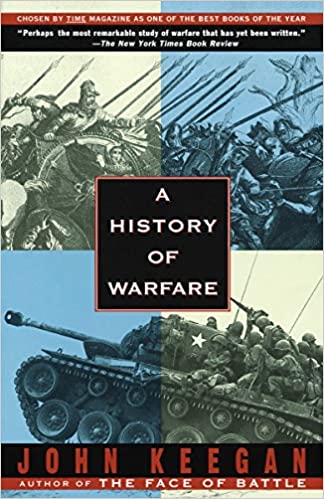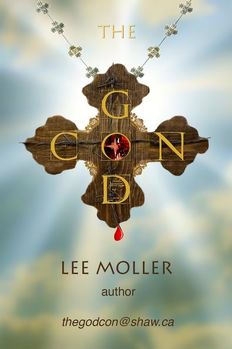History of Warfare, A; John Keegan; 1993; Vintage Books; 393 pgs; References, Bibliography, Index18/8/2022  This is another book that cannot be summarized. It is long, uses a small font, and is information dense. Since human history and war cannot be separated, you can view this book as a history of humanity through the lens of war. The book opens and closes with Clausewitz. Clausewitz was a well known theorist about war and he argued famously that war was an extension of politics by other means. This book disagrees. Keegan points out early that wars are often fought over religious issues, and that Muhammad, unlike Christ, was a man of violence who preached jihad. Islam is divided over two caliphs (successors to Muhammad). They disagree on who is in charge and the basic aims of Islam, which is often religion at knifepoint. When guns were introduced to the battle field, many thought them unworthy of a soldier. In fact, Japan was so appalled at the idea that a common man could get a gun and kill man of high stature that they banned guns outright in order to perpetuate their close quarter combat military society. That all changed when the US sailed a gun ship into Tokyo harbor. Throughout history, war and technology moved hand in hand. With each new weapon came new tactics and new goals. The history of war is the history of empires and peoples… and there have been a lot of them through the ages. I had never heard of many of them, such as the Yanomamo of Peru: they were called "the fierce people" and were known for stylistic forms of ritual combat. War as we know it started with the invention of the bow and arrow (man's deadliest innovation to date) . The bow is a simple machine used to store muscle energy as mechanical energy and quickly release it. The bow was a true stand-off weapon... a game changer. Later, the composite bow was invented. These bows shot arrows further and faster, were much smaller than their predecessors, and could be wielded easily from horseback. . The first written history of war comes from Sumerians wall reliefs. Sumer was the land between the Tigris and Euphrates rivers around 5,000 years ago. The next innovation was the chariot. One may wonder why the Egyptians et al did not ride horses into battle. Horses have changed a lot due to selective breeding. Five thousand years ago, horses were small. They were well muscled in the rear but could not carry much weight on their forelimbs. This meant that a rider had to sit way back on the horse, making control difficult. But horses were good at pulling things, like a chariot. Later in history, the chariot was abandoned for the mounted cavalry soldier. Fortifications are discussed at some length. Fiction has made much of siege engines vs. fortifications. In reality, fortifications nearly always won out in a siege... until the age of gunpowder. Much is made of the clash between the nomadic horse peoples of the steppe (e.g. Mongols) and the settlers and farmers of cities and towns. There really was no way for them to coexist as they both competed for the same resources. Another group of well known raiders, the Vikings, used ships rather than horses. The book also goes into depth on armies: how they are formed, manned, fed, organized etc. Armies are built in many ways: through enslavement, conscription, and through volunteers who are rewarded in some way, such as citizenship. Rome was built that way and Rome had the first body of professional fighting officers in history. The introduction of iron was another game changer. Iron was strong, but very heavy, so most armor remained made of bronze. Cannons of bronze were supplanted by larger cannons of iron. Gunpowder allowed iron shots to fly horizontally which allowed cannons to undermine defensive fortifications. Siege engine shots were lobbed and generally dealt ineffective glancing blows. There is so much information in this book that it is best used as a reference work. Subsequent chapters discuss logistics and supplies and, of course, the modern wars that shaped our world: The US Civil War, the French Revolution, WWI and WWII, the introduction of nuclear weapons, and so on.
0 Comments
|
AuthorLee Moller is a life-long skeptic and atheist and the author of The God Con. Archives
May 2024
Categories
All
|

 RSS Feed
RSS Feed